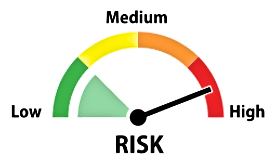Conversations about the New Risk Costs
 I recently had several interesting conversations with RotoLab honcho Merv Pate. We are grateful that he has been such an advocate for BABS, so I always listen to his ideas and suggestions with great interest. You might be interested in these thoughts as well.
I recently had several interesting conversations with RotoLab honcho Merv Pate. We are grateful that he has been such an advocate for BABS, so I always listen to his ideas and suggestions with great interest. You might be interested in these thoughts as well.
Merv: I am not sure how effective it is to use hard count tabulation on the Asset side of the ledger, while using a risk cost-associated penalty on the Liability side. They seem to be opposite approaches.
Ron: It’s possible I might be persuaded to handle assets likewise at some point, but I think there are dangers to doing that — e.g. expectation of projective accuracy, potential sacrifice of constructing a balanced roster, etc. — and I’m not ready to venture down that path.
M: After programming in these new risk costs, I think I understand where you are going with this. As a Rotisserie owner, I care a lot more about the specifics of a players Assets than I do their liabilities. I do need to know who is a plentiful power source, who can potentially deliver SBs, and who is likely have shot at saves, etc….. I DON’T really care much about the particulars of a players liabilities. I just need to know approximately how much risk I am taking on in a player. I didn’t get that sense from the player’s liabilities spread out across 4 coded fields, but I do get that message translated to me with these Risk Costs. I get what you are doing here now. And per our previous exchange, I don’t see much benefit into quantifying a single Asset score. The BABS ranking pretty much tells us that now, and as I mentioned, the specifics of the Assets do matter more.
R: You’ve articulated this better than I did.
M: A prediction of mine: You will end up increasing the penalty for (Rg-) at some point in the future. Nothing hits a player upside the head harder than recency bias.
R: Ha, this makes me smile. I am realizing that there is an opportunity to do more with these risk values – and (Rg-) is probably the most obvious – but I want to see how this new system plays out in 2022 first.
M. Also, the downward curve of Age risk does start around 35-36, I plotted out Fantasy Values versus age last fall, and it seems to be spot on. But the curve continues to go down as you go further up the scale and age 39 is a more risk than age 35. Any thought to assigning an Age risk of 0.25 per year over 35? Verlander at 39 seems to carry a more Age risk than other aging pitchers three years younger. I know nothing is changing for 2022, but give it some thought.
R: Makes sense. Both this and (Rg-) seem like obvious potential enhancements for 2023. I’ll review these and any other ideas that readers pass along, and build those into the planning process next winter.
